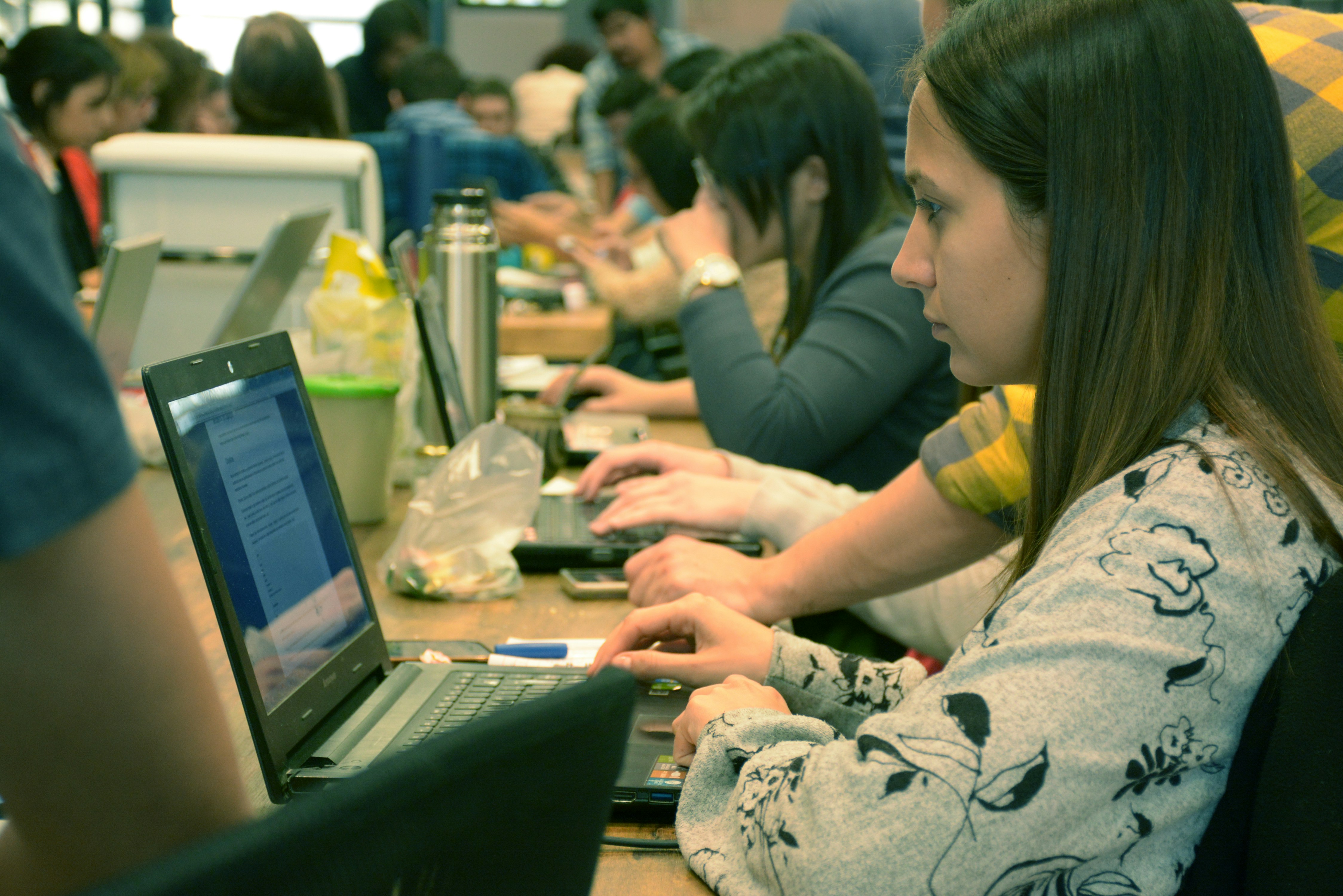< Back
A Complete Step-by-Step Guide On How To Find Peer-Reviewed Articles on Google Scholar
Declan Gessel
May 24, 2024
Are you tired of sifting through unreliable information online? When your professor asks for peer-reviewed articles, it can be challenging to find them. There are many research articles and even editorial pieces that are not peer-reviewed. This could be a big problem if you're asked to write a paper using only peer-reviewed articles.
You could even receive a lower grade simply because you can't find the right sources! The CRAAP Test is great for evaluating sources. But when it comes to finding peer-reviewed articles, Google Scholar is a fantastic tool.
Table of Contents
What Is Google Scholar?

The growing demand for audio content is on the rise as more people turn to podcasts, audiobooks, and other forms of audio media for entertainment, education, and information. In today's fast-paced world, audio content offers a convenient way to consume information while multitasking, whether during a commute, workout, or household chores.
This trend has created a need for high-quality audio content across various industries, driving individuals and businesses to explore new avenues for producing and distributing audio content.
Discovering Scholarly Literature with Google Scholar
The ever-growing volume of academic research presents a considerable challenge: finding the most relevant and credible sources. Google Scholar is a free search engine that caters specifically to scholarly literature, providing researchers with a vast database of articles, theses, books, abstracts, and court opinions across various disciplines.
Unlock the Power of Google Scholar: A Comprehensive Scholarly Search Engine
Google Scholar offers a comprehensive search functionality, indexing a vast collection of scholarly materials to help users access the most relevant information. Through its relevance ranking feature, Google Scholar prioritizes articles based on search terms, ensuring users find the most pertinent resources quickly and effortlessly.
The citation tracking functionality enables users to gauge the potential impact of an article by revealing how often it has been cited. Moreover, Google Scholar facilitates the easy discovery of related articles, enabling users to explore new research areas and delve deeper into their chosen topics.
Navigating Limitations: Full-Text Availability and Peer-Review Identification
While Google Scholar provides links to articles, gaining full access may require library subscriptions or payment of publisher fees. Furthermore, the search engine cannot directly verify if an article is peer-reviewed, posing a limitation to those seeking specific types of content.
Related Reading
• 10 Examples of Reliable Sources
• Academic Search Engines
• how to know if an article is peer reviewed
• semantic scholar
• what are scholarly sources
• credible sources for research
• how to use google scholar
• craap method
• evaluating sources
How to Find Peer-Reviewed Articles On Google Scholar

Let’s dive into the main methods for finding peer-reviewed articles:
Library Databases
Library databases are powerful online collections of scholarly articles, often with filters to limit results to peer-reviewed journals. You can access them through your school or local library. Some popular databases include Academic Search Complete, CINAHL, and ScienceDirect. To search these databases, start with keywords and search terms related to your topic. Apply filters to limit results to peer-reviewed articles only.
Google Scholar
Google Scholar is a massive search engine for academic publications across disciplines. Be cautious though, not everything is peer-reviewed. While Google Scholar doesn't have a built-in filter, you can identify peer-reviewed articles by looking for publications in scholarly journals such as the Journal of Experimental Psychology or Nature. Additionally, check for abstracts and references, as these are common elements in peer-reviewed articles.
Write smarter, not harder with Jotbot. Start writing for free with Jotbot today — sign in with Google and get started in seconds.
How To Identify Peer-Reviewed Articles

I often get questions about how to discern whether a particular article is peer-reviewed or not. It's a crucial skill for any student or researcher. Here's how I go about it:
Content-Type
I'm always mindful that peer-reviewed journals publish various types of content, not all of which undergo the same rigorous review process. For example, editorials, commentaries, book reviews, and news articles often don’t go through peer review. While these pieces provide valuable insights, they may not represent peer-reviewed research.
Look for Clues
To identify peer-reviewed articles, I look for certain tell-tale signs. Peer-reviewed articles typically follow a specific format. I generally search for the abstract – a concise summary outlining the research question, methods, results, and conclusions. I also look for a comprehensive list of references, as this indicates that the authors consulted and cited established research in the field.
Remember
Always remember that the absence of an abstract or reference list doesn't necessarily mean the article is of poor quality. It indicates a different type of content within the journal.
Related Reading
• ChatPDF Alternative
• Best Databases for Research
• Google Scholar Alternative
• Best AI for Writing Research Papers
• Peer-Reviewed Sources
• How to Find Sources for a Research Paper
• How to Tell if a Source Is Scholarly
• Best Websites for Research Papers Free
• Databases Like JSTOR
• Scholarly vs Popular Sources
• How to Find Research Papers
• AI That Cites Sources
• The CRAAP Test
• CRAAP Analysis
• What Is a CRAAP Test?
• CRAAP Criteria
• What Is the CRAP Test
• CRAP Test for Sources
• How to Determine Credibility of a Source
• CRAP Test English
• How to Evaluate a Source for Credibility
Additional Tips For Using Google Scholar

Targeted Keywords
When researching on Google Scholar, it is crucial to identify and utilize relevant keywords. By using specific terms, names of theories, or methodologies directly related to your research topic, you can help databases and search engines better understand your focus and deliver more precise results.
Cast a Wider Net
Combining broad and narrow terms in your search can significantly enhance your research process. Starting with broader terms provides a general overview of the topic, allowing you to gradually add narrower terms to refine your results and locate more specific articles.
For instance, if your research focuses on the "effects of social media on teenagers," beginning with "social media" can give you background information. Subsequently, adding "teenagers" to your search can help you find more targeted articles.
Timeliness Matters
Always consider the publication date of the articles you find on Google Scholar. Depending on your research topic, the most recent research might be crucial. Databases often allow users to limit their search by date range, ensuring they are working with the latest available information in their field.
Write Smarter With Jotbot — Start Writing for Free Today
Jotbot allows users to take notes in real time, and it does this by using artificial intelligence. You can take more detailed notes by using the note-taking function within Jotbot. It offers a faster mode of note-taking than writing by hand or typing. Jotbot can turn these notes into complete documents for you, so you don't have to go back and do it yourself.
AI Video Summarizing
The Jotbot service can auto-summarize video into text. This feature could be used by students to build study guides. AI video summarization is a very empowering feature that will help users to understand video content better. This feature simplifies the content within a video and makes it easier to understand.
AI Citation/Source Finder
Jotbot can also help users find citations and sources for their work. The AI source finder does all of this work for you. After you put the information into Jotbot, the AI source finder will go out and find sources for you to use. You can then select the sources that you want to use in your paper or document.
AI Outlines for Essays
You can use Jotbot to generate outlines for any essay that you are writing. The outline is created using AI, but it gives you a good starting point. Once you have the outline, you can then add to it to make sure that it fits your requirements. This feature is intended to make it easier for you to start writing your essays.
AI Essay Writer
Jotbot can write entire essays for you after you have provided it with the information that it needs. The AI essay writer will take the information and write the essay in a way that makes sense. You can then review the essay and make any changes that you want to it. The AI essay writer is intended to give you a starting point to work from when writing your papers.
Related Reading
• How to Find Sources for an Essay
• Finding Sources
• Types of Scholarly Sources
• Are Blogs Scholarly Sources
• How to Find Scientific Articles
• Sourcely AI
• Vetting Sources
• CRAAP Test Generator
Write more, better, faster.
Your personal AI document assistant












